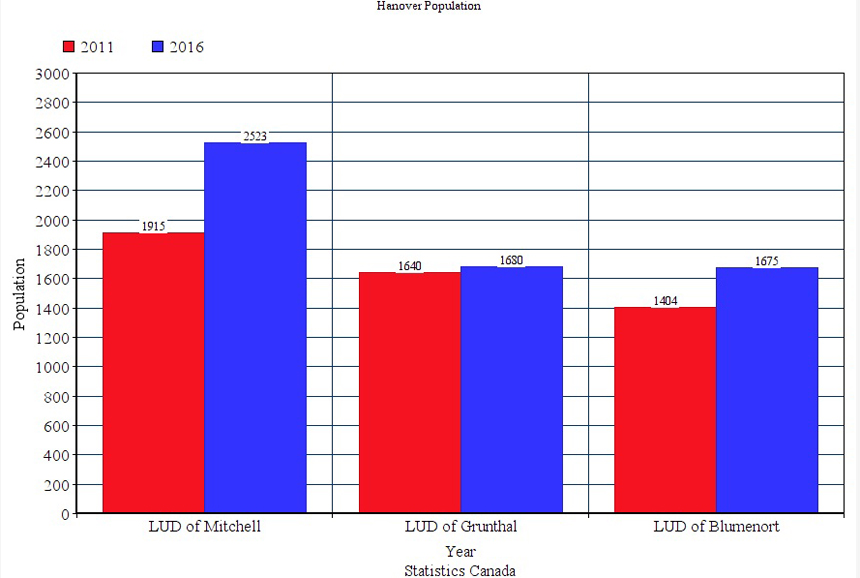The Rural Municipality of Hanover is now the heaviest populated municipality in all of Manitoba.
2016 Census figures were released Wednesday, showing Hanover has a population of 15,733 residents. That is an increase of 12.2% over 2011 when the population was 14,026.

When you factor in cities, Hanover remains 4th on that list, followed by Winnipeg, Brandon and Steinbach. Steinbach has overtaken Hanover for the first time ever.
"It's good," says Hanover Reeve Stan Toews. "Twelve percent is good growth."
But Toews says Census figures do not match up with what Hanover had projected. Back in January, Toews announced they were expecting to surpass the 18,000 mark. He notes there is some discrepancy in the number of dwelling units. Census data shows Hanover has 4,623 dwellings, while Toews says Hanover's records show an additional 300. Toews says the 18,000 residents represents the number of dwelling units to the end of 2016 multiplied by 3.7 persons per household, which was the average in 2011. According to the 2016 Census, Hanover's residents per household has dipped to 3.4.
Toews says they won't spend much time trying to figure out why the discrepancy, but he says if it is because households chose not to fill out their Census, that will cost the municipality.
"It does have a financial impact on the municipality," notes Toews. "A lot of our grants and stuff are based on population."
Meanwhile, Toews says he was surprised to see Steinbach now has more residents than Hanover. He says people obviously want to live in this area, downplaying any sort of friendly competition between Steinbach and Hanover.
As for the Local Urban Districts in Hanover, all three are experiencing growth, but at different rates. Mitchell grew by 31.7% from 2011 to 2016 and now has 2,523 residents. Blumenort experienced growth of 19.3% and now has 1,675 residents. And in Grunthal, growth of 2.4% from 2011 to 2016 means there are now 1,680 residents.

















